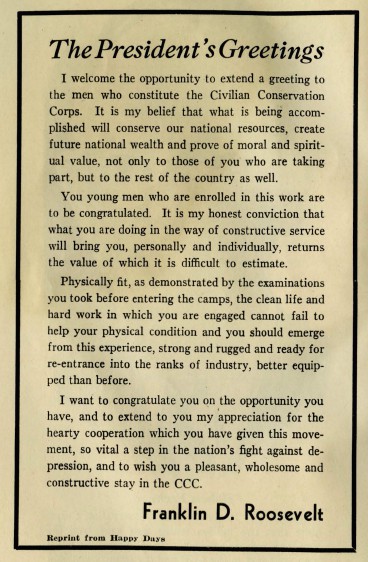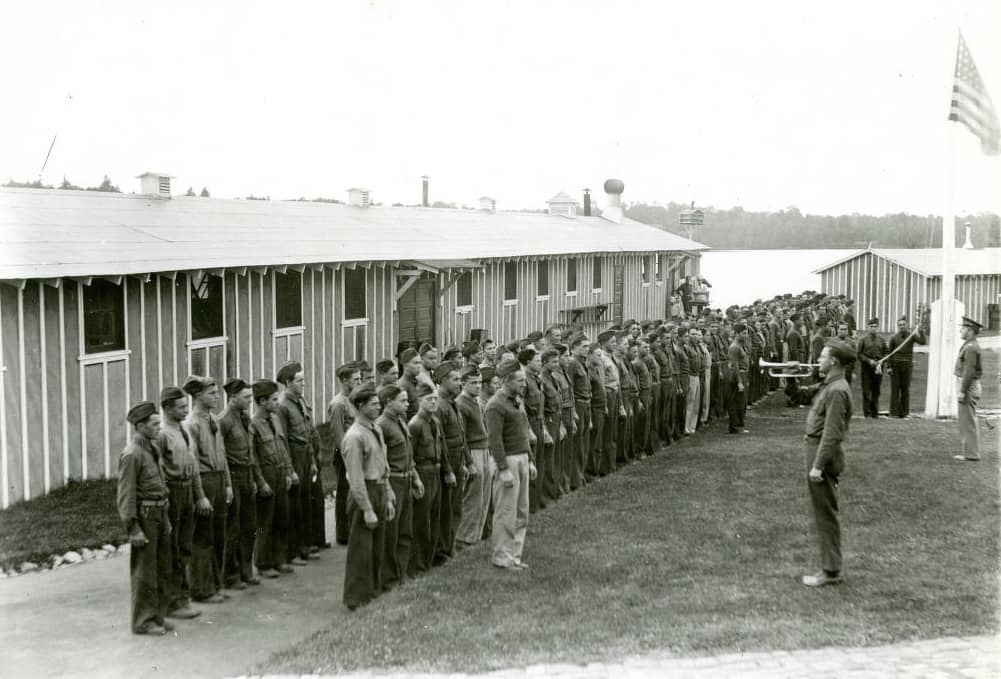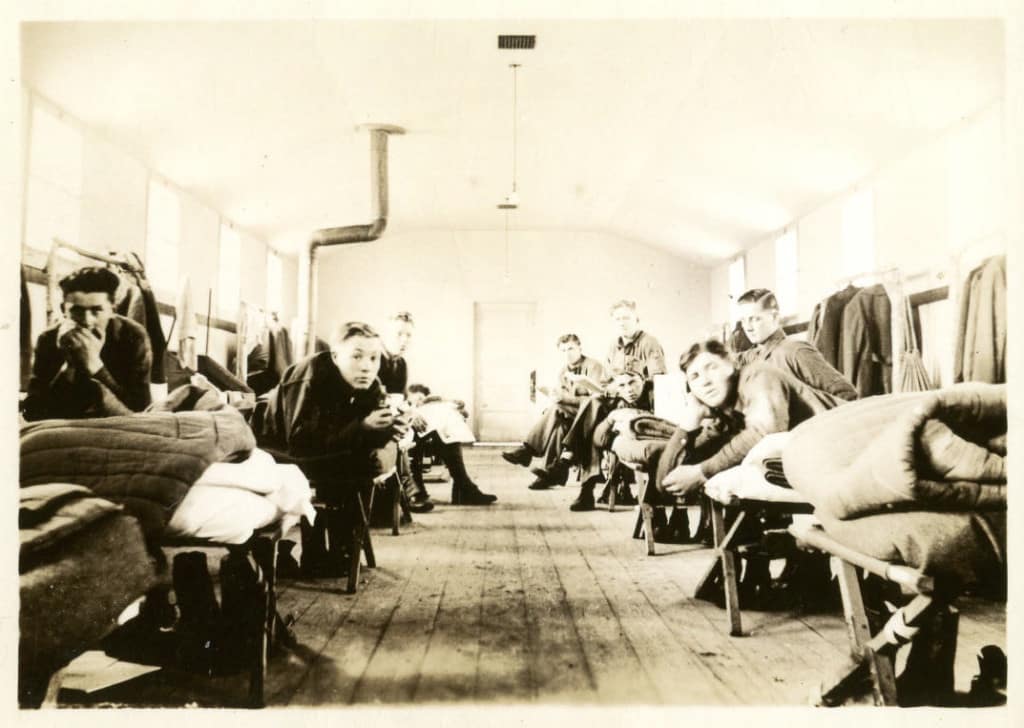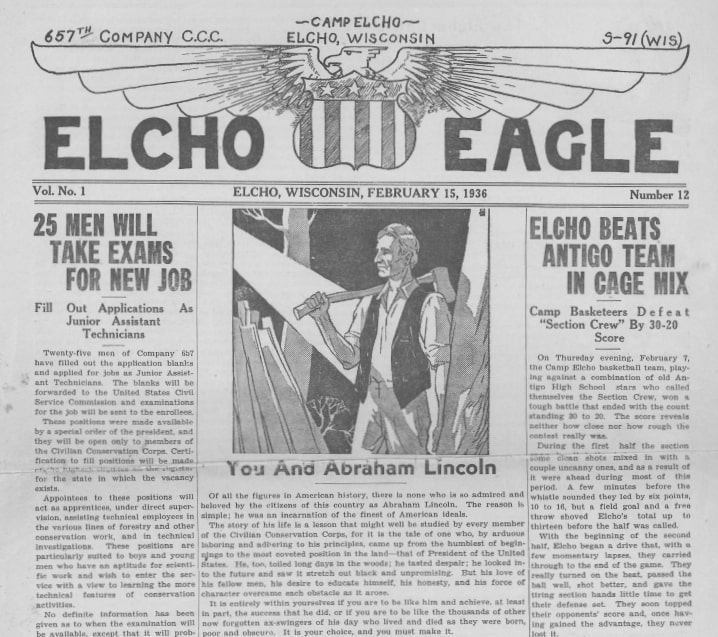In March 1933, President Franklin Roosevelt established the Civilian Conservation Corps, one of the first New Deal programs designed to create jobs for Americans during the Great Depression. From 1933-1942, the CCC put nearly three million unemployed young men to work building parks, planting trees, stocking streams and rivers, and other environmental conservation projects.
The CCC employed nearly 100,000 young men at dozens of work camps across Wisconsin, primarily in the northwoods (this map from the collections of the Wisconsin Historical Society shows the distribution of camps in 1936). A new digital collection from the Langlade County Historical Society documents the history of one of the earliest CCC camps in the state — Camp 657, first established at Summit Lake in Langlade County in June 1933, with more permanent barracks erected at Otter Lake, near the community of Elcho, in November 1933.
The work of CCC Camp 657 focused on reforestation in a region that had been recently clearcut by the logging industry. Enrollees planted almost 1,400 acres of trees and also built fire roads, lookout towers and fire breaks, stocked streams and ponds with fish, improved conditions for wild game, fought forest fires, and established three acres of public campgrounds.
The Langlade County Historical Society’s collection includes photographs taken by Edward Drab, an early recruit at Camp 657. The photos capture candid moments of life in camp — mealtimes in the field, boxing matches and baseball games, visits to the local tavern — and are supplemented with memories from Drab himself, collected by Society president Joe Hermolin in an interview conducted near the end of Drab’s life (he died in Antigo in 2013 at the age of 101).
The collection also features a set of materials donated to the Society by Ken McNinch, whose grandfather, Ken Eliot, worked at Camp 657 and served as the camp’s unofficial historian. Eliot’s collection includes photographs, badges, menus from special holiday dinners at the camp, and a series of newsletters published in the camp — originally titled Woodchopper and later known as the Elcho Eagle.
Assistance in creating the digital collection was provided by Dave Tlusty, who scanned the newsletters, and Jody Bembinster and Natasha Allen, students in the School of Library and Information Studies at UW-Madison, who created expanded descriptive metadata.
Explore the Elcho Civilian Conservation Corps Collection from Langlade County Historical Society.
See all digital collections from Langlade County Historical Society.
Read more about the CCC in Wisconsin in Carol Ahlgren, “The Civilian Conservation Corps and Wisconsin State Park Development,” Wisconsin Magazine of History vol. 71, no. 3 (1988). The Sparta CCC District Sixth Corps Area Annual (1937) features profiles of CCC camps around the state, including the Elcho camp.








You must be logged in to post a comment.